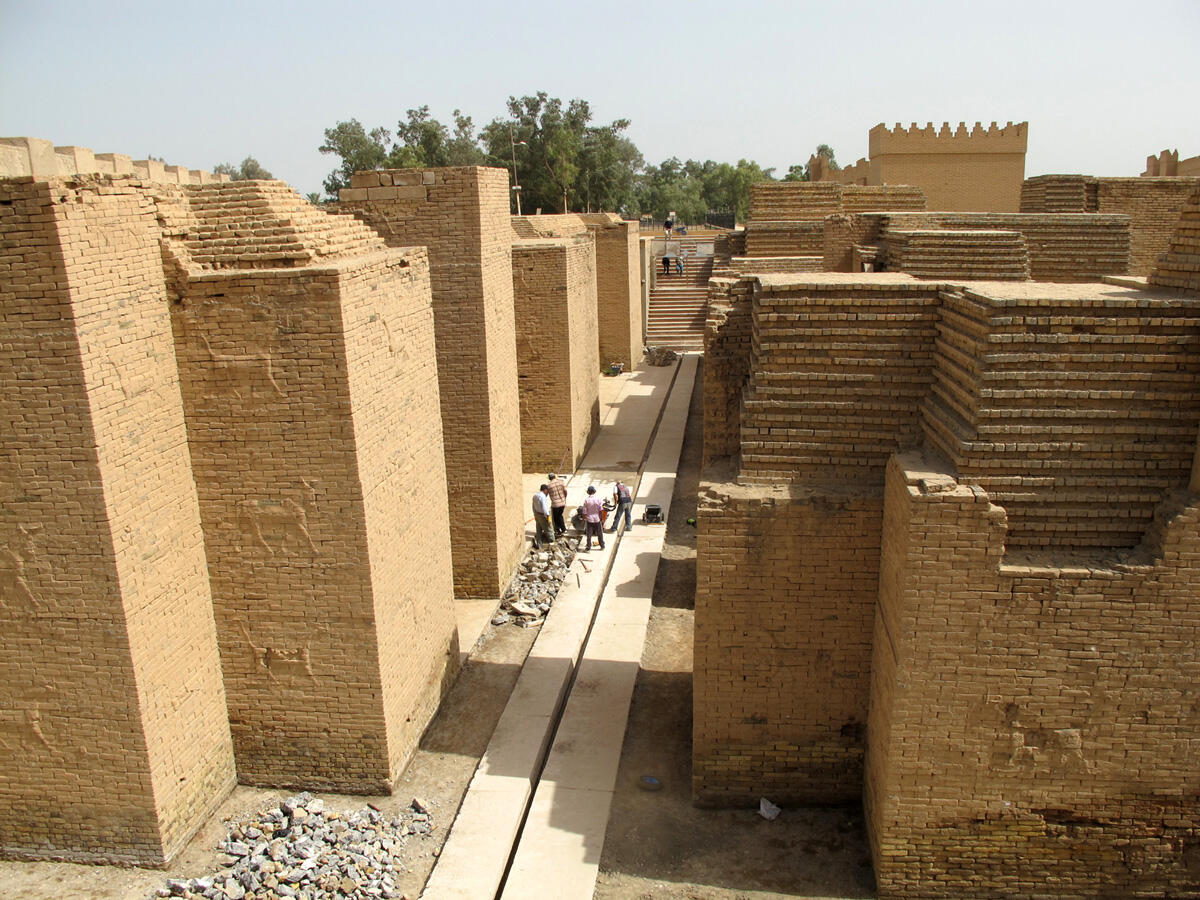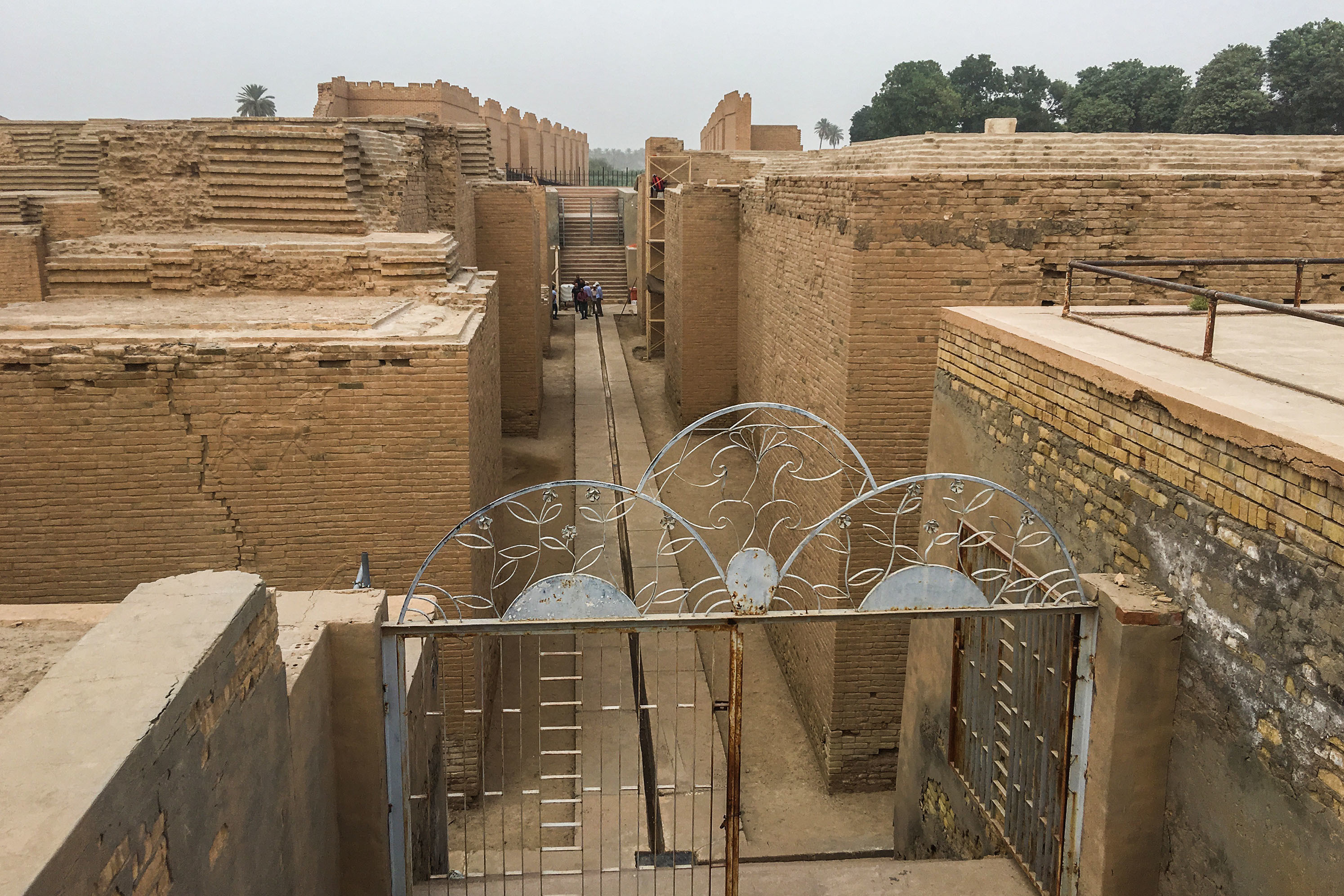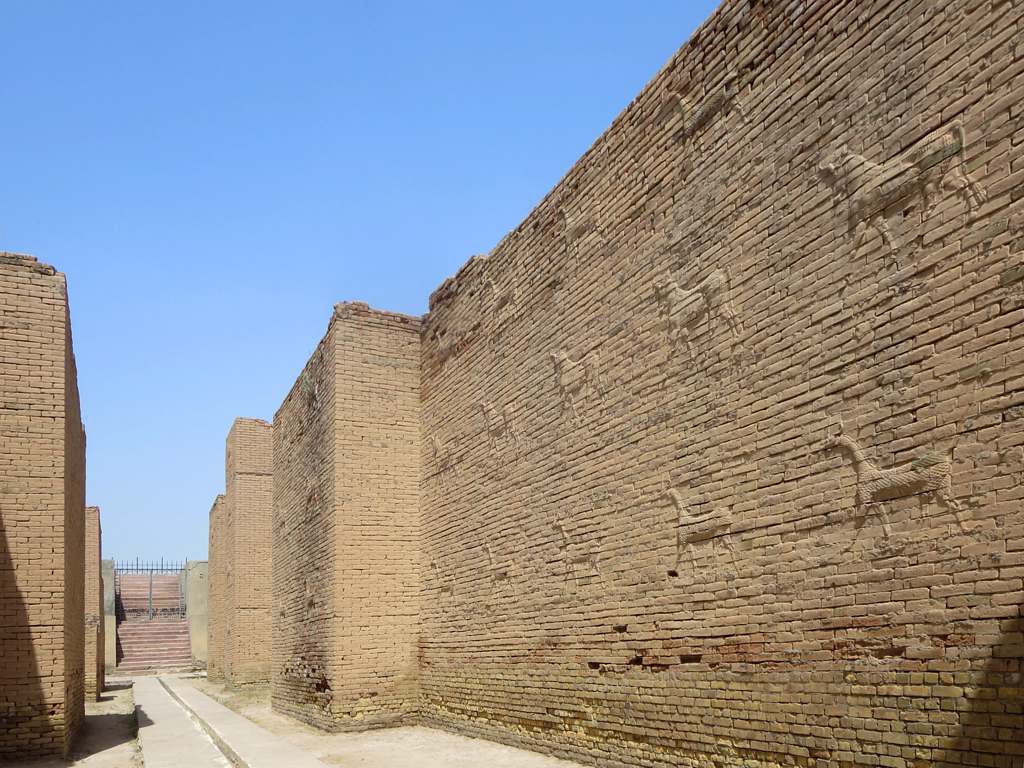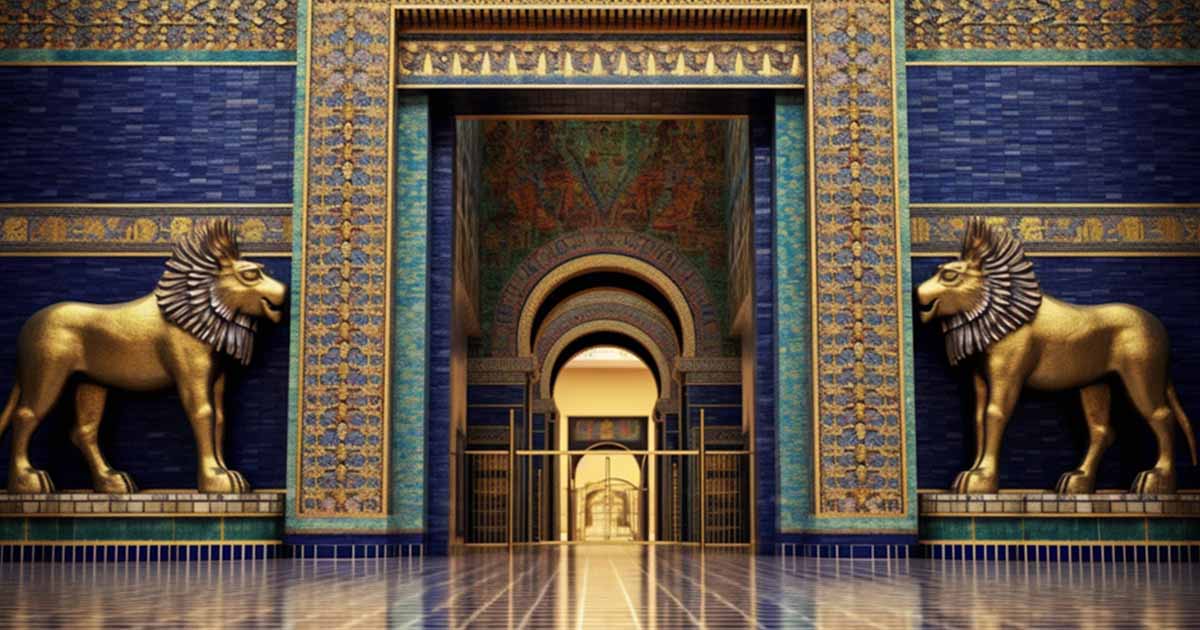The Ishtar Gate, built around 575 BCE during the reign of King Nebuchadnezzar II, is a striking example of ancient Mesopotamian architecture and art. Serving as the grand entrance to Babylon, the gate symbolized the city’s status as a center of power and culture. It was dedicated to Ishtar, the goddess of love, war, and fertility, highlighting the divine protection and royal authority associated with the city.
Historical Context of the Ishtar Gate
As part of Babylon’s fortifications, the Ishtar Gate was both a defensive structure and a ceremonial landmark. It played a key role during sacred festivals, such as the Akitu (New Year), when statues of Babylonian deities were carried through the city via the Processional Way. This celebrated road, lined with additional reliefs of animals and gods, underscored the spiritual and cultural significance of the gate.

Architectural Features
The gate was constructed with vibrant blue-glazed bricks that shimmered in the sunlight, creating a visual spectacle. Adorning its walls were intricate reliefs of sacred animals:
- Lions symbolized Ishtar’s strength and protection over the city.
- Dragons represented Marduk, the patron deity of Babylon, embodying wisdom and power.
- Bulls were associated with Adad, the storm god, signifying strength and fertility.
These symbolic animals not only added artistic elegance but also reinforced Babylonian religious and political ideology.

The Processional Way
The Processional Way extended from the Ishtar Gate and was central to the city’s religious ceremonies. Its walls were decorated with glazed reliefs that matched the grandeur of the gate itself. Together, they emphasized the connection between architecture, religion, and governance in Babylonian society.
Modern Discoveries and Reconstruction
In the early 20th century, German archaeologist Robert Koldewey excavated the Ishtar Gate. Fragments of the structure were transported to Berlin, where they were reconstructed and are now displayed in the Pergamon Museum. The reconstruction has become a vital resource for understanding Neo-Babylonian architecture, allowing modern audiences to appreciate the grandeur of this ancient civilization. Meanwhile, the original site in Iraq is preserved as part of Babylon’s UNESCO World Heritage status.

Legacy of the Ishtar Gate
The Ishtar Gate remains one of the most celebrated achievements of the ancient world. Its intricate design and symbolic motifs continue to inspire admiration for Babylonian ingenuity. As a UNESCO World Heritage Site, it underscores the cultural and historical importance of preserving ancient monuments. The reconstructed gate in Berlin further ensures that the legacy of Babylon’s architectural brilliance is accessible to the world.

Conclusion
The Ishtar Gate is more than a monument of architectural splendor; it is a profound symbol of Babylon’s cultural, religious, and political achievements. Its artistic beauty and symbolic depth serve as a reminder of the innovative and spiritual legacy of ancient Mesopotamia, making it a timeless testament to human creativity and ambition.

